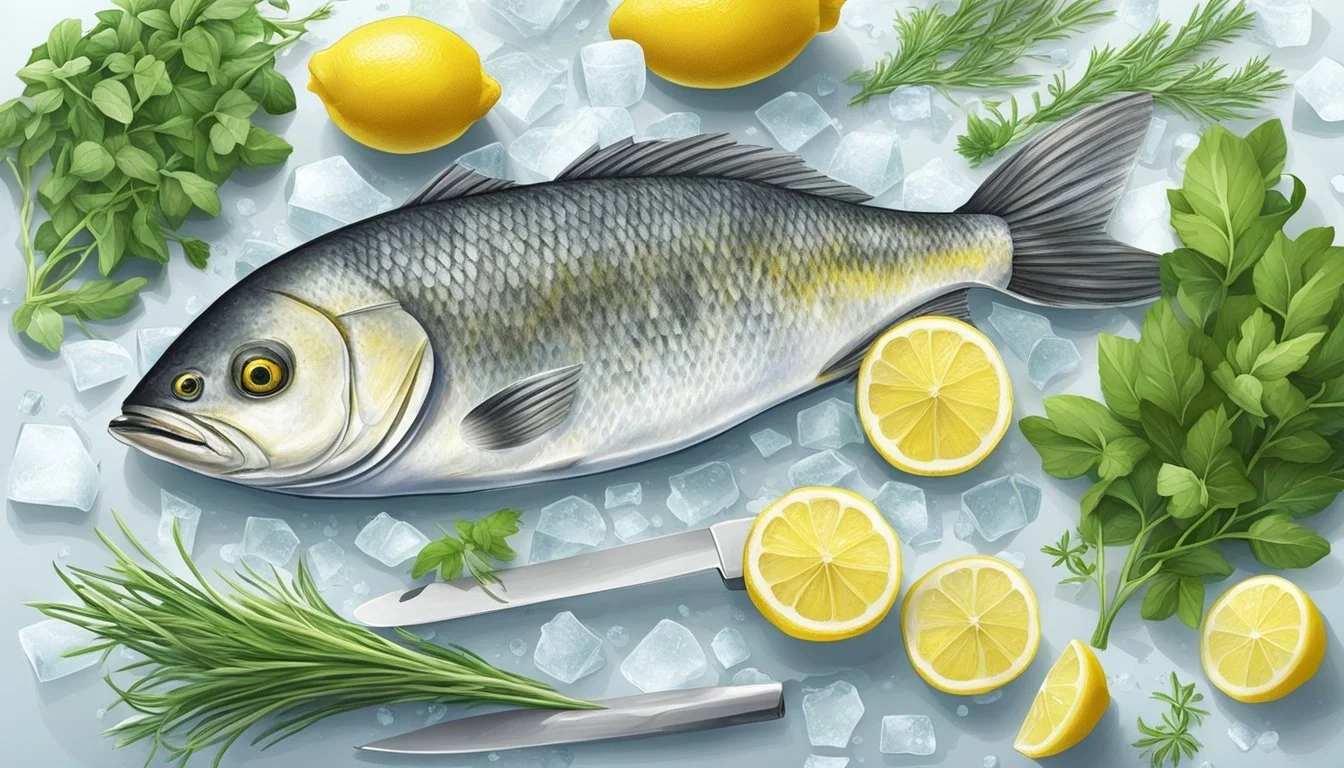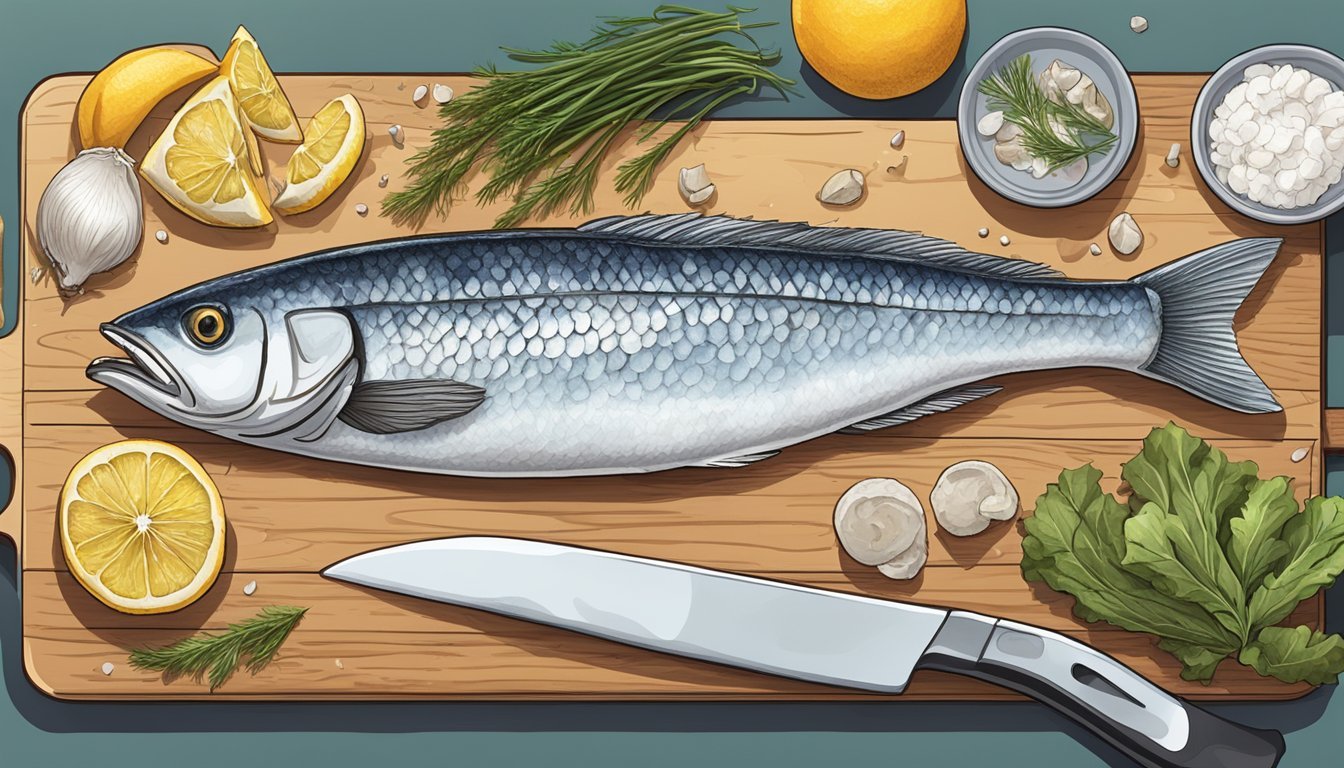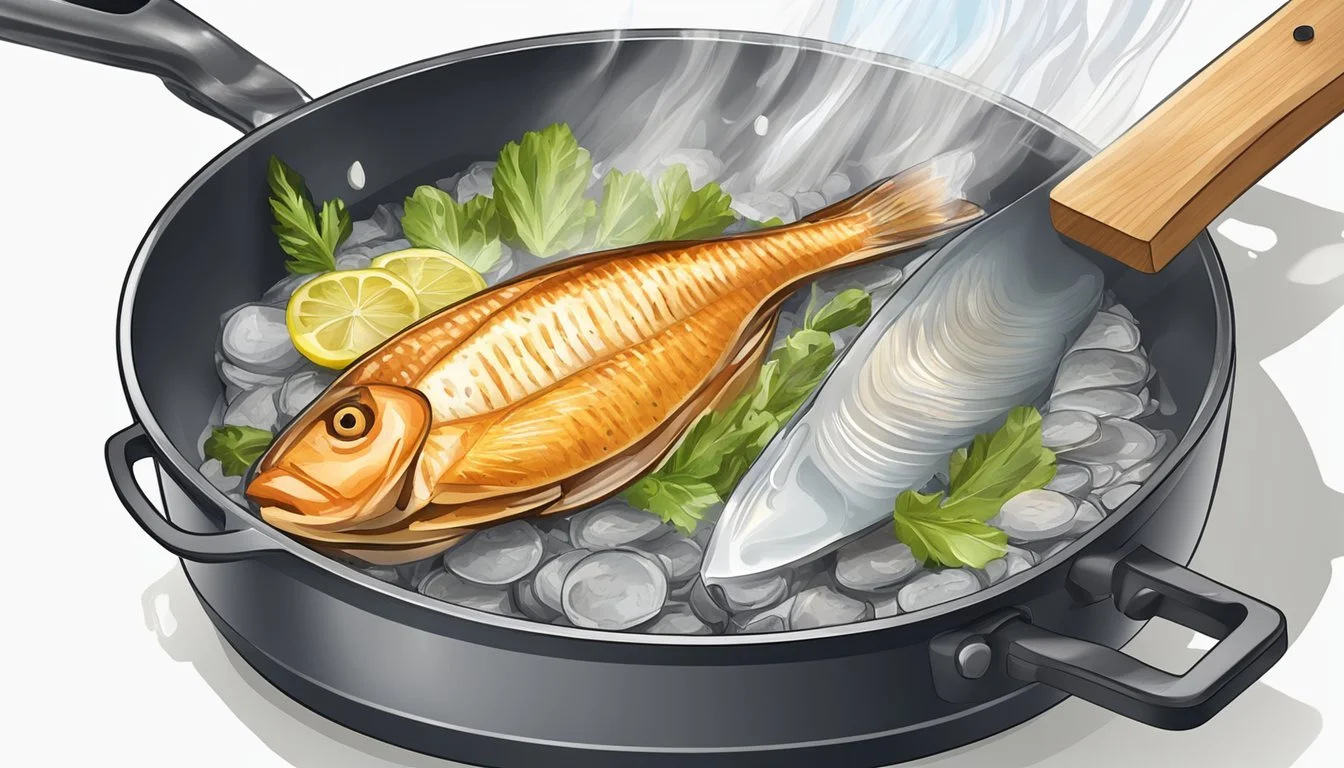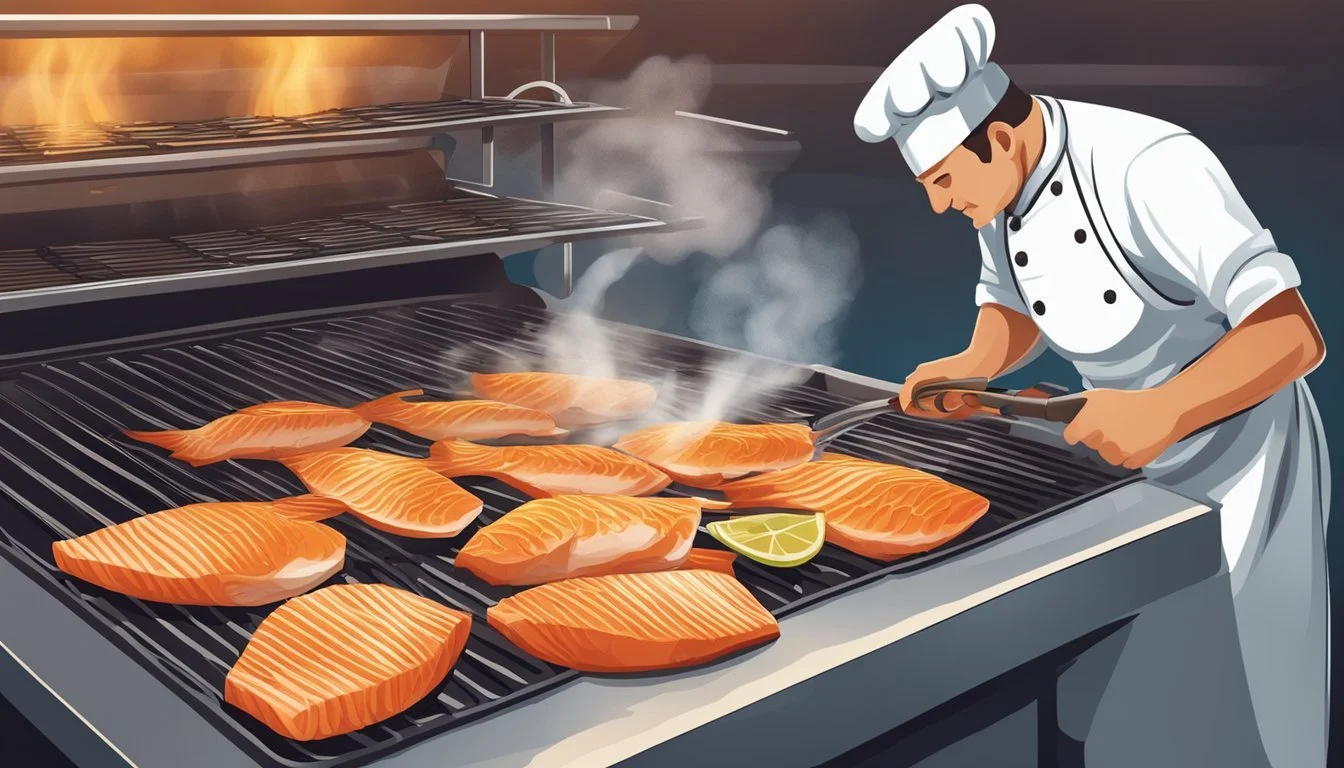Reviving Dry, Overcooked Fish
Expert Tips for Restoring Moisture
Overcooked fish may seem like a culinary disappointment destined for the waste bin, but there are several techniques to revive it, maintaining both the integrity of the dish and a commitment to sustainability. Dry, overcooked fish suffers from an unwelcome texture and diminished flavor, yet these issues are resolvable. Addressing this culinary challenge not only aids in reducing food waste but also aligns with sustainable development goals by making the most of resources and minimizing unnecessary consumption.
In the kitchen, reviving overcooked fish relies on introducing moisture back into the fillet and perhaps infusing it with complementary flavors. This can be achieved through a variety of methods, which range from incorporating the fish into saucy dishes to gentle reheating with added liquid. Each strategy aims at transforming a once unpalatable piece of protein into a palatable and enjoyable meal.
The recovery process involves creative culinary tactics that can restore the fish's tenderness and juiciness. For instance, flaking the overcooked fish and mixing it into a moist environment, such as broth, sauce, or a steaming basket with aromatics can effectively rejuvenate its texture and taste. These practical solutions emphasize the importance of resourcefulness in cooking, align with sustainable practices, and display respect for the ingredients at hand.
Understanding Moisture Loss in Fish
When fish is exposed to heat during cooking, moisture loss occurs primarily due to evaporation. The heat causes water molecules within the fish muscle to turn to vapor and escape, which can lead to a drier texture. Fish muscle consists largely of proteins that react to heat by denaturing and contracting, which further squeezes out moisture.
Factors that accelerate moisture loss include:
High Cooking Temperatures: Cooking fish at too high temperatures can result in rapid protein coagulation and water evaporation.
Extended Cooking Time: The longer fish is subjected to heat, the more moisture is expelled.
Proper storage is also crucial in managing water loss in fish. Improper storage can lead to dehydration even before the cooking process begins. The goal is to maintain an optimal environment where water activity—a measure of water available for microbial activity—is minimized to preserve the fish's quality and moisture content.
Here are some storage tips:
Refrigeration: Keep fish at a consistent and appropriate temperature.
Packaging: Use air-tight methods to protect fish from environmental factors that contribute to dehydration.
By understanding the processes and factors that contribute to moisture loss, one can apply techniques to preserve the succulent nature of fish. Adjustments in heat levels and cooking durations, alongside meticulous storage practices, are key to mitigating the dehydration of fish, ensuring that its desired tender texture is maintained as much as possible.
Preventing Dryness in Cooking Process
To ensure fish retains moisture during cooking, one must control the heat, utilize moisture-enhancing methods, and introduce liquids when necessary. These techniques collectively maintain the desired texture and prevent a dry outcome.
Correct Cooking Temperatures
Using the precise temperature is crucial for preventing dry fish. Oven-baked fish should be cooked at a gentle 275°F (135°C). One should let the fish reach room temperature for 10-15 minutes before cooking to ensure even heat distribution.
Stovetop Cooking: Maintain low heat and avoid high temperatures that can quickly evaporate moisture.
Oven Cooking: Preheating and using consistent temperatures will help preserve the fish's internal moisture.
Moisture-Retaining Cooking Methods
Choosing the right cooking method can greatly influence moisture retention in fish. The use of nonstick skillets can aid in the careful management of fish fillets during the cooking process.
Encasing: Wrapping fish in foil or parchment paper can trap steam and keep the fish moist.
Pan Type: Opt for non-stick pans to reduce the need for excessive oil and facilitate easier release and cleanup.
Using Liquids to Maintain Moisture
The introduction of liquids can create a steamy environment that helps to cook the fish gently. This can be done in various ways:
Add Water: A splash of water in the pan (about two tablespoons) can increase humidity.
Include Fats: A drizzle of olive oil can seal in moisture and add flavor.
The presence of liquids, whether it be a sauce, broth, or even a layer of oil, act as a barrier, reducing direct exposure to heat and aiding in the slow, gentle cooking process.
Post-Cooking Resuscitation Techniques
After overcooking fish, it can seem challenging to restore its original juiciness, but certain methods can reintroduce moisture effectively. These techniques harness the principles of water conservation to salvage the dish.
Steaming to Reintroduce Moisture
Steaming enables the gentle reintroduction of moisture back into overcooked fish. The process utilizes evaporation under a controlled environment to infuse the fish with water vapor without direct contact. Here's how one could use steaming to resuscitate dry fish:
Set up a steamer basket over a pot of simmering water.
Ensure the fish does not touch the water, to avoid further cooking.
Cover the pot to trap steam and rehydrate the fish for a few minutes.
Optional: Adding herbs or a splash of wine to the simmering water can infuse the fish with additional flavors.
Sauces and Marinades as Moisture Agents
Sauces and marinades act as excellent moisture agents, able to penetrate dry fish and add both flavor and juiciness. They use the principle of transpiration, where the fish slowly absorbs the moisture through its delicate fibers. The steps below outline how to apply sauces and marinades:
Prepare a sauce or marinade that complements the fish's flavor.
Submerge or brush the fish with the chosen liquid.
Let the fish rest to allow absorption.
Reheat gently if required, being careful not to overcook further.
Using these post-cooking techniques can make a significant difference in revitalizing overcooked fish, turning what could have been a culinary disappointment into a delightful meal.
Selecting the Right Fish and Cuts
When aiming to prevent overcooking, selecting both the right type of fish and the appropriate cut is crucial. Fattier fish like salmon, mackerel, or sablefish have natural oils that aid in maintaining moisture even when slightly overcooked. They are more forgiving due to their oil content and are often preferred for their flavorful and moist texture.
On the other hand, leaner fish such as cod, flounder, or snapper require more attentive cooking methods to avoid drying out. It’s beneficial to select thicker cuts, as they tend to retain moisture better during the cooking process. For uniform cooking, ensure that the cuts are even in thickness.
Here is a guide to selecting cuts:
Thicker is better: Aim for cuts that are at least one inch thick.
Evenly cut: Uniform thickness ensures even cooking.
Skin-on: The skin can help retain moisture during cooking.
In terms of productivity and agricultural production, sustainably farmed or wild-caught fish from sources employing sound water management practices add value to the choice of fish. These sources not only produce a higher quality product but also contribute to the sustainability of fish stocks and the health of the aquatic ecosystem.
By meticulously choosing the right fish and cuts, one fosters an appreciation for the produce and the environment it comes from, while also elevating the dining experience with a moist, delicious result.
Understanding Fish Types and Textures
Different fish species have varying textures, which are influenced by their habitat, diet, and physiology. These distinctions play a critical role in how they respond to cooking, especially when trying to revive overcooked fish. Firm-fleshed fish like tuna and swordfish can become dry if overcooked, yet they can withstand bolder moisture-adding treatments due to their dense texture.
Conversely, delicate fish such as tilapia or sole have a fine, flaky texture that overcooks quickly, necessitating gentle rehydration methods to avoid further disintegration. These fish typically do not benefit from aggressive heating or intense flavor additions.
The fat content in fish like salmon or mackerel provides natural moisture and helps protect against overcooking. However, even these oily varieties can dry out under excessive heat. They may tolerate richer sauces or oils to restore some of their lost moisture.
Fish Type Texture Fat Content Overcooking Response Tuna Firm Low Becomes very dry Swordfish Firm Moderate Can handle rich sauces Tilapia Delicate Low Flakes apart easily Sole Delicate Low Loses moisture quickly Salmon Medium High Dries out but revivable Mackerel Medium High Best with light moisture
Environmental factors such as climate change also impact fish texture by affecting their life cycle and growth. Warmer waters from global warming can alter fish muscle structure, potentially affecting how different species tolerate cooking processes. Additionally, changes in crop yields that impact fish feed can also indirectly affect fish texture.
It is essential to account for the fish's natural attributes when considering moisture-saving techniques to revive overcooked fish. Knowledge of fish types and textures aids in selecting the right approach for each variety, ensuring the best possible restoration of texture and flavor.
Pairing Dry Fish with Complementary Sides
When faced with dry, overcooked fish, selecting the right side dishes can add moisture and create a more enjoyable meal. Utilizing high-water-content vegetables and saucy sides not only injects moisture back into the fish but also complements its flavors.
Moisture-boosting Vegetables:
Cucumbers: With their high water content, cucumbers serve as a hydrating accompaniment.
Tomatoes: Fresh or in a juicy salad, they can lend succulence to each bite.
Zucchini: Lightly sautéed, it adds both water and a tender texture.
Sauce-based Accents:
Lemon-Herb Sauce: A drizzle of this vibrant mixture can bring both moisture and zest to the plate.
Yogurt Dill Sauce: Creamy and cool, bolstering dry fish with both nutrients and a smooth texture.
Starches with Broths or Juices:
Rice pilaf with vegetable broth: Utilizes liquid to soften the rice, thereby pairing well with the fish.
Quinoa salad with vinaigrette: The absorbent nature of quinoa helps to trap moisture, which it releases with each forkful.
Expert Tip: When plating, consider laying the overcooked fish atop a bed of these moist sides or lightly mixing them, allowing the fish to soak up additional liquids.
Table of Moisture-Rich Side Dishes and Their Benefits:
Side Dish Benefit Cucumber Salad Adds hydration, fresh taste Tomato Salsa Introduces juice, flavor variety Sautéed Zucchini Provides moisture, soft texture Lemon-Herb Sauce Offers zest, light moisture Yogurt Dill Sauce Supplies nutrients, creaminess Rice Pilaf Absorbs broth, enhancing mouthfeel Quinoa Vinaigrette Retains dressing for extra moistness
In considering water resources and nutrients, these sides propose not just a solution to dryness but a balanced, nutrient-rich dish. Crop growth also plays a role in the freshness and quality of the vegetables, influencing the overall meal quality. By focusing on these refreshing sides, one can transform overcooked fish into a palatable and nutritious meal.
The Role of Utensils and Cookware
When attempting to revive overcooked fish, the utensils and cookware used can be crucial in enhancing moisture and improving texture.
Utensils for Handling Fish:
Fish Spatula: Thin and flexible, ideal for flipping delicate fish fillets without breaking them.
Kitchen Tongs: Provide a gentle grip for rehydrating and serving without causing further damage to the fish structure.
Cookware for Moisture Retention:
Steamer Basket: Using a steamer basket over simmering water prevents direct heat and allows for gentle rehydration of the fish.
Foil Wrapping: Wrapping fish in foil with added moisture sources (like citrus juice or broth) can trap steam and reinfuse moisture.
Additional Tips:
Cookware Material: Non-stick or well-seasoned cast iron pans can prevent fish from sticking and losing moisture during any corrective cooking.
Lids and Covers: Using a lid can create a moisture-rich environment conducive to rehydrating the fish.
Techniques for Cookware Use:
Always preheat pans to ensure even heat distribution.
When steaming, keep the fish elevated above the water to ensure it is cooked by the steam's heat, not by boiling.
By focusing on gentle cooking methods and protective barriers, like foil, these cookware strategies can help rescue dry fish, making it palatable and enjoyable once again.
Saving Overcooked Fish in Commercial Settings
In commercial kitchens, chefs often confront the challenge of overcooked fish. The key to salvaging this situation is quick and creative intervention. Technology, conservation, and food industry know-how merge to offer practical solutions.
Immediate Actions:
Upon realizing the fish is overcooked, chefs should:
Remove heat - Take the fish off the heat source immediately to stop further cooking.
Moisten - Gently add moisture back to the dish using:
Broths
Sauces
Compound butter
Technology Integration:
Modern kitchen equipment, such as precision ovens and sous-vide machines, provides more control over cooking temperatures. Using these advanced tools, chefs can better prevent overcooking. In incidents where overcooking does occur, such technology aids in gently reheating fish with added moisture to improve its texture.
Culinary Techniques:
Clever culinary techniques can disguise the dryness:
Flake and Mix - Flake the overcooked fish and mix it into a moist dish (e.g., fish cakes).
Re-purpose - Utilize the fish as an ingredient in dishes that inherently contain moisture, such as soups or salads.
Food Industry Practices:
Sustainability is vital within the food industry, so avoiding waste is important. Repurposing overcooked fish not only conserves resources but also upholds the establishment's reputation for quality and sustainability.
When addressing overcooking issues, chefs take these steps as part of their commitment to conservation and excellence in the food industry. These tactics ensure that the establishment remains cost-effective and reduces waste, aligning with sustainability goals.








